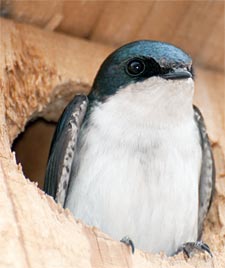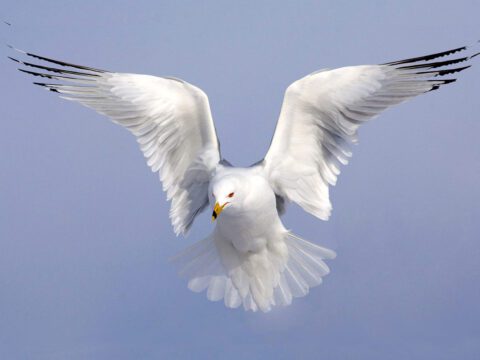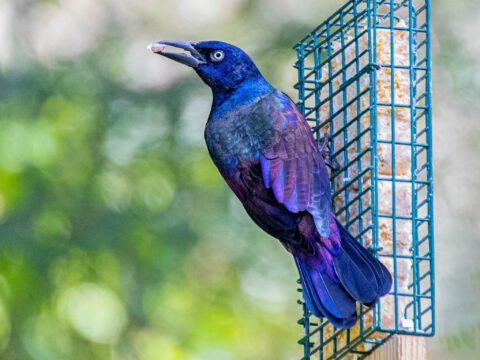NestWatchers can help look for oil’s wider effects
July 8, 2010
A Tree Swallow is not exactly the face of the Gulf oil spill at present—and we hope it never will be. But many backyard-nesting birds, including swallows, do migrate through the Gulf Coast twice a year. We’re encouraging people to participate in our NestWatch project as one way to keep an eye on their populations.
Land birds aren’t likely to get fouled in oil. But they do fuel up on coastal fruits and insects as they pass through, so they could either be exposed to toxins contained in their food or made vulnerable to reduced food supplies if oil has an effect.
NestWatch project leader Laura Burkholder said the effects could be subtle but widespread. “We need bird watchers across the country to help us find out if birds that pass through or winter in the Gulf region carry contamination with them, possibly creating an ‘oil shadow’ of declines in bird reproduction hundreds of miles from the coast,” she said.
Nesting success is notoriously variable, so any such effect would be hard to pin down to a single cause like oil. The best way to look for it is to amass large amounts of data from a wide area and many observers. And that’s pretty much the definition of a citizen-science project.
NestWatch is one such project that’s open to anyone with an interest in birds. It involves visiting a nest for a few minutes, twice per week, and recording information such as how many eggs it contains, how many chicks hatch, and how many leave the nest. NestWatch will focus on five species: Northern Cardinal, Red-winged Blackbird, Barn Swallow, Purple Martin, and Tree Swallow when looking for effects. Learn more about how to help here.
Citizen-science participants have helped the Cornell Lab monitor the success rates of nesting birds for 45 years. Now, Burkholder said, it’s especially critical to capture data on nesting birds to reveal the health of birds before they encounter the oil spill—as well as in the years ahead, to detect possible long-term effects.
To help the effort, visit our NestWatch site. In addition to accepting observations from the general public, NestWatch is available as a data repository for wildlife agencies and scientific organizations to support their research on the impacts of the oil spill.

All About Birds
is a free resource
Available for everyone,
funded by donors like you
American Kestrel by Blair Dudeck / Macaulay Library


